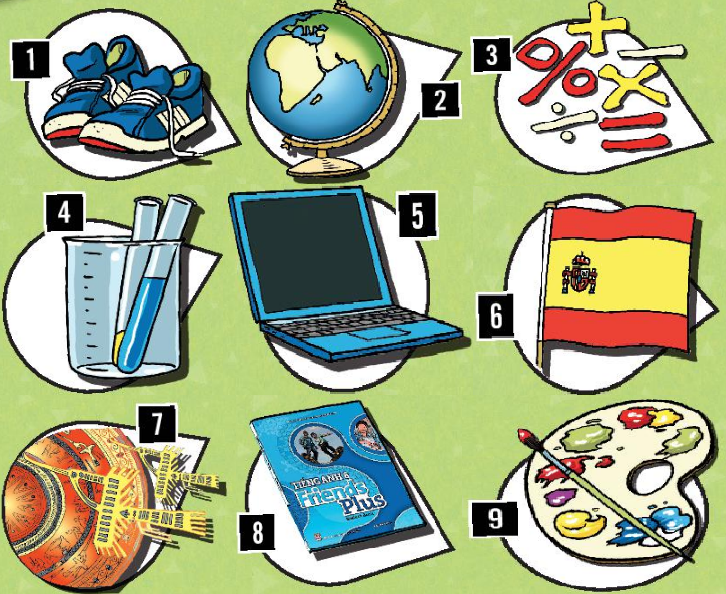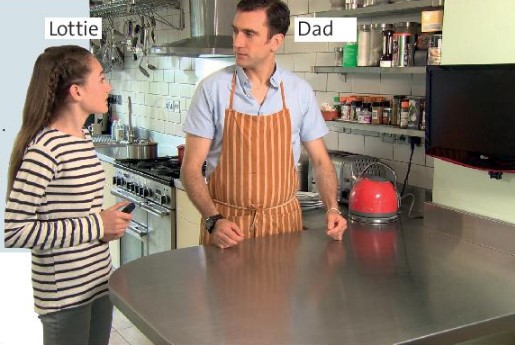Hãy nhập câu hỏi của bạn vào đây, nếu là tài khoản VIP, bạn sẽ được ưu tiên trả lời.

Bài nghe:
Robert Wadlow was born in February 1918, in a town of Alton, Illinois, in the USA. He grew up and went to school there. And people in the town loved him. He grew very quickly. At the age of 6, he was taller than his father. That was a problem at school, so they made a special desk for him.
Robert was the oldest of the five children. He has two brothers and two sisters who were a normal height. When Robert left school at the age of 17, he was 2,48 metres tall. He went to the university but it was difficult for him, so he left.
Robert became famous in the USA when he appeared in a famous circus. People called him the Alton Giant, the Giant of Illinois. People also call him the gentle giant because he spoke very quietly.
Robert never stopped growing. Robert got a job with a shoes company that made his special shoes and travelled around the country with his father. They went to 800 different town in the USA, and Robert became more famous.
Sadly, Robert died at the age of 22, because of the problem with one of his feet. People were very sad when Robert died.

1. fins
2. gills
3. lungs
4. feathers
5. wings
6. legs
7. scales
8. hair
Vertebrates Vertebrates are animals with backbones. The following groups are the different types of vertebrates. |
Fish Fish are cold blooded animals and they live in water. They have got scales and (1) fins. They haven't got lungs. They have got (2) gills instead. |
Mammals All mammals are warm-blooded and they feed their babies milk. Most mammals live on land, for example, humans and dogs. However, some mammals, like whales, live in water, but they haven't got gills. Mammals have all got (3) lungs. |
Birds Birds live on land, but some of them look for food in the water. They have got (4) feathers, two legs and two (5) wings. Some birds, like ostriches and kiwis, can't fly. All birds lay eggs. |
Amphibians When amphibians are young, they live in water and they haven't got lungs. When they are adult, they have got lungs and four (6) legs - for example, frogs and toads. |
Reptiles Most reptiles live on land. They have got lungs and (7) scales but not gills. They haven't got any wings or feathers and they haven't got any (8) hair. They are cold blooded animals and many of them live in warm places. |

1. PE
2. geography
3. maths
4. science
5. ICT
6. Spanish
7. history
8. English
9. art
1. Are you good at PE?
(Bạn có giỏi môn thể dục không?)
2. When’s our next geography exam?
(Khi nào thì kỳ thi Địa lý tiếp theo của chúng ta?)
3. Are you a maths genius?
(Bạn có phải là một thiên tài toán học không?)
4. Is your science notebook organised?
(Sổ ghi chép khoa học của bạn có được sắp xếp không?)
5. Have we got an ICT class tomorrow?
(Ngày mai chúng ta có tiết học Công nghệ thông tin và truyền thông không?)
6. Do you study other languages, like Spanish?
(Bạn có học các ngôn ngữ khác, như tiếng Tây Ban Nha không?)
7. Have you got history homework today?
(Hôm nay bạn có bài tập Lịch sử không?)
8. Do you think that our English textbook is interesting?
(Bạn có nghĩ sách giáo khoa tiếng Anh của chúng ta thú vị không?)
9. How many art teachers are there in the school?
(Có bao nhiêu giáo viên mỹ thuật trong trường?)

1. Can elephants (1) hear with their ears and their feet?
(Voi có nghe được bằng tai và bằng chân không?)
2. How big can a gorilla (2) grow?
(Một con khỉ đột có thể phát triển lớn đến mức nào?)
3. Some scorpions are dangerous. Can a scorpion (3) kill a human?
(Một số loài bọ cạp rất nguy hiểm. Bọ cạp có thể giết người không?)
4. Camels don't (4) drink a lot of water. How many months can a camel (5) survive without water?
(Lạc đà không uống nhiều nước. Lạc đà có thể sống được bao nhiêu tháng nếu không có nước?)
5. How far can an eagle (6) see? It can (7) see a small animal from a distance of
(Đại bàng có thể nhìn thấy bao xa? Nó có thể nhìn thấy một con vật nhỏ từ khoảng cách…)
6. Ostriches can't (8) fly but how fast can they (9) run?
(Đà điểu không thể bay nhưng chúng chạy nhanh đến mức nào?)

- path (n): tuyến đường
- hill (n): đồi
- railway (n): đường sắt
- forest (n): rừng
- river (n): sông
- road (n): con đường

1. sanwich
2. apple
3. juice
4. meat
5. rice
6. chips
7. beans
8. vegetables
9. rice
10. sweets
11. nuts
12. fizzy drinks
13. egg
14. salad
15. bread
16. pasta
17 chicken
18 water
19. soup
SCHOOL FOOD
This is what people are saying about their school lunches around the world. Which ones do you like best?
SOUTH AFRICA: I'm making a (1) sandwich for my lunchbox. I've also got an (2) apple and some (3) juice.
INDIA: It's normal to eat with your hands here. We're vegetarians, so there isn't any (4) meat with our (5) rice.
THE UK: I have pizza and (6) chips today with (7) beans. There are (8) vegetables, but I don't like them.
VIỆT NAM: We often have (9) rice with meat and vegetables for lunch at school. We really enjoy our time eating together.
THE USA: Vending machines in schools here don't sell crisps and (10) sweets now. They've got healthy snacks like (11) nuts and they sell juice, not (12) fizzy drinks.
ARGENTINA: Our school lunches are quite healthy. Today we have meat with (13) egg. My favourite!
AUSTRALIA: I'm having fish and chips with some (14) salad and (15) bread. Tasty!
SPAIN: I really like the menu today – (16) pasta, (17) chicken pieces and salad, yoghurt,
bread and (18) water.
JAPAN: Students here help to serve the food and we clean the tables! Today we're serving (19) soup.

1. Ben is at home.
(Ben đang ở đâu? – Ben đang ở nhà.)
2. He is studying.
(Bạn ấy đang làm gì? – Bạn ấy đang học.)
Tạm dịch văn bản:
Tôi vẫn có thể học
Hầu hết trẻ em từ 5 đến 18 tuổi ở Anh phải đến trường. Nhưng trường hợp của tôi thì khác. Tôi chơi quần vợt và tôi phải luyện tập rất nhiều, và tôi thường đến các quốc gia khác để thi đấu trong các giải đấu. Làm thế nào tôi vẫn có thể học được? May mắn thay, học tập kỹ thuật số giúp tôi.
Khi tôi nghỉ học, tôi tham gia các khóa học trực tuyến. Máy tính giúp tôi giải các môn học và tôi có thể học với tốc độ của riêng mình. Khi không có giải đấu, tôi trở lại trường và tôi có thể làm các bài kiểm tra một cách dễ dàng. Bạn bè của tôi cũng giúp tôi nếu tôi có bất kỳ vấn đề nào.
Cách học mới này giúp tôi cảm thấy vui vẻ và theo kịp bạn bè. Tôi vẫn có thể học khi tôi không ở trường. Đó là lý do tại sao học kỹ thuật số ngày càng trở nên phổ biến.
* theo kịp: làm bất cứ điều gì cần thiết để duy trì mức độ hoặc bằng với ai đó hoặc điều gì đó

1. watch that wildlife programme on TV
2. It's really good
3. it's time for dinner
4. watch TV later
She can watch the TV programme later.
(Bạn ấy có thể xem chương trình tivi sau.)
Lottie: Dad.
Dad: Yes?
Lottie: Is it OK if I watch that wildlife programme on TV?
Dad: No, I'm afraid you can't.
Lottie: But Dad, why not? It's really good.
Dad: I'm sorry, but it's time for dinner.
Lottie: Oh, OK. Can I watch TV later, then?
Dad: Yes, of course you can.
Lottie: Great. Thanks, Dad.
Tạm dịch bài hội thoại:
Lottie: Bố ơi.
Bố: Sao thế con?
Lottie: Con có thể xem chương trình về động vật hoang dã trên TV được không ạ?
Bố: Không, bố e là con không thể.
Lottie: Nhưng bố ơi, tại sao không ạ? Nó thật sự hay lắm.
Bố: Bố rất tiếc, nhưng đến giờ ăn tối rồi con.
Lottie: Vâng ạ. Vậy con có thể xem TV sau được không ạ?
Bố: Ừm, tất nhiên là con có thể.
Lottie: Tuyệt vời. Con cảm ơn bố ạ.

1-protein
2-carbohydrates
3-vitamins
4-diseases
5-minerals
6-fat
7-fat
8-water
Nutrients in food
There are six main types of nutrients.
(1) Protein makes you strong. There is a lot of this in meat, fish, milk, eggs, beans and nuts.
(2) Cabonhydrates give us energy. There are a lot of these in bread, pasta, rice and potatoes.
(3) vitamins are important nutrients in the food we eat and you can find them in different types of food. People who don't get many of these in their food can get (4) diseases.
(5) Minerals are important for strong teeth and bones. You can find them in meat, fish, milk, vegetables and nuts. This nutrient has got the most energy and is good for our skin and hair. The (6) fat in food such as butter, chocolate, chips, burgers and crisps is unhealthy, but the (7) fat in food like olive oil, nuts and some fish is healthy.
(8) Water is also a very important nutrient. You can't live for more than one or two days without it There's a lot of this in fruit, vegetables and juice, too.





1. a
2. c
3. c
4. b
5. b
6. c
Nội dung bài nghe:
Woman: Hello and welcome to wildlife. Today's program is about animals and what they can do. Okay, let's start with the big animal. Is it true that all elephants can hear long distances with their ears and their feet?
Man: Yes, it is. They can hear other elephants by feeling sounds in the ground with their feet.
Woman: Wow, that's amazing. Here's another big animal. That's the sound of gorilla animals which can grow to around 250 kilos. They're big, strong and intelligent and that helps them survive.
Man: Yes, but small animals can also survive. Look! I've got one here.
Woman: Ohhh… I don't like scorpions. Tell me can they kill people?
Man: Some of them can, and this one can.
Woman: But it's very small.
Man: Yes, some of the smallest ones are the most dangerous.
Woman: Oh… I prefer this animal.
Man: What's that?
Woman: A camel. Camels have got very different skills. They don't drink a lot. They can survive 6 months without water.
Man: Okay, now it's my turn. Eagles can see small animals from a distance of one kilometer. Ostriches can’t fly but they’re the tallest heaviest and fastest birds. They can run more than 60 kilometers an hour.
Woman: That is amazing. So, what can humans do?
Man: We can communicate.
Woman: But a lot of animals communicate. Listen. Whales. Monkeys.
Man: Yes, but we can speak and I think that is our most important skill.
Woman: Okay, now let's speak....
Tạm dịch bài nghe:
Nữ: Xin chào và chào mừng đến với thế giới động. Chương trình hôm nay nói về động vật và những gì chúng có thể làm. Được rồi, hãy bắt đầu với con vật lớn. Có phải tất cả các loài voi đều có thể nghe được khoảng cách xa bằng tai và bằng chân?
Nam: Đúng vậy. Chúng có thể nghe thấy những con voi khác bằng cách dùng chân cảm nhận âm thanh trong lòng đất.
Nữ: Chà, thật tuyệt vời. Đây là một con vật lớn khác. Đó là âm thanh của khỉ đột, nó có thể phát triển đến khoảng 250 kg. Chúng to lớn, mạnh mẽ và thông minh và điều đó giúp chúng sinh tồn.
Nam: Vâng, nhưng động vật nhỏ cũng có thể sống sót. Nhìn! Tôi có một con ở đây.
Nữ: Ồi... Tôi không thích bọ cạp. Cho tôi biết chúng có thể giết người không?
Nam: Một số chúng có thể, và con này có thể.
Nữ: Nhưng nó rất nhỏ mà.
Nam: Ừm, một số những con nhỏ nhất lại là nguy hiểm nhất đấy.
Nữ: Ồ… Tôi thích con vật này hơn.
Nam: Đó là gì?
Nữ: Một con lạc đà. Lạc đà có những kỹ năng rất khác nhau. Chúng không uống nhiều nước. Chúng có thể sống sót đến 6 tháng nếu không có nước.
Nam: Được rồi, giờ đến lượt tôi. Đại bàng có thể nhìn thấy các loài động vật nhỏ từ khoảng cách 1 km. Đà điểu không thể bay nhưng chúng là loài chim cao nhất và nhanh nhất. Chúng có thể chạy hơn 60 km một giờ.
Nữ: Thật tuyệt vời. Vậy, con người có thể làm gì?
Nam: Chúng ta có thể giao tiếp.
Nữ: Nhưng rất nhiều loài động vật có thể giao tiếp. Nghe nè. Cá voi nè. Khỉ nè.
Nam: Ừm, nhưng chúng ta có thể nói và tôi nghĩ đó là kỹ năng quan trọng nhất của chúng ta.
Nữ: Được rồi, bây giờ chúng ta hãy nói ...